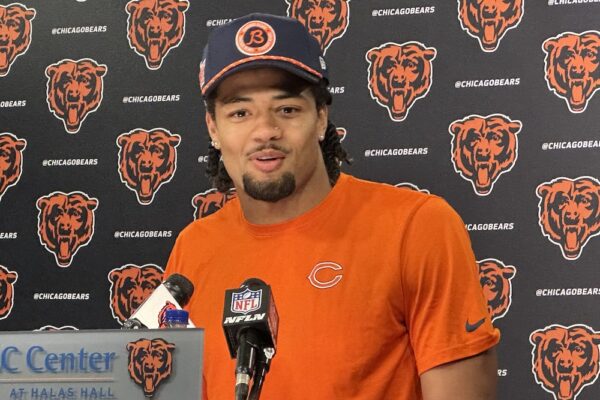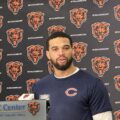The Cubs infield has been set for the past few years, more or less: Kris Bryant at third, Anthony Rizzo at first, Javier Báez at shortstop and Willson Contreras catching. But the question of who fills the void at second base has lingered since the end of 2018 when Báez became the primary shortstop.
For 2020, they appear to be down to two options: Nico Hoerner and Jason Kipnis, the latter of whom was officially signed to the team on Friday. It’s in keeping with the narrowing down of the Cubs’ second base options.
“When I signed here in the offseason I knew the spot wasn’t just going to be handed to me,” Kipnis said Friday. “It was going to be something I had to work for.”

Kipnis and Hoerner were responsible for two of the Cubs’ three runs in Sunday night’s exhibition game against the White Sox, which the Cubs lost 7-3. Kipnis, as DH, hit a solo home run to center field in the first inning and Hoerner’s sac fly RBI came in the second.
Kipnis, a Northbrook Native who nearly dashed the Cubs’ World Series dreams with a blast that went foul in the bottom of the 9th in Game Seven of the World Series, has spent his entire Major League career with the Cleveland Indians, beginning in 2011. A career .250 hitter, he carved out a nice career for himself as the Indians’ second baseman for the last decade. After the Indians declined Kipnis’s 2020 club option, the Cubs signed him to a minor league contract, which was purchased on Friday, officially making him a member of the Major League club. His one year deal will take him through his age-33 season, and the two-time All Star hopes to be more than just a toss at a dartboard.
“I’m a strong boy right now,” Kipnis said. “I’m going to tell you that right now. I put in a lot of work. The time off, I know there was a chance to. It was like a fork in the road. You kind of go in two different directions. You can kind of wait by the sideline and kind of wait to when we’re going to get back in, or you can keep working out and stay focused and get after it a little bit and come back in better shape.”
Hoerner started Sunday night’s game at second base after spending most of his time at shortstop during his callup in 2019. A 2018 first round pick out of Stanford, Hoerner batted .297/.365/.427 through 375 plate appearances in the Minor Leagues. He never quite showed much pop as a hitter, tallying only five home runs in that time, but did enough to be ranked the #47 prospect in baseball in 2019. Tabbed as the #41 prospect in 2020 by Baseball Prospectus, the 23-year-old was brought up in 2019 as the Cubs were ravaged with injuries. His debut got off to a hot start, as he hit to a 1.023 OPS and two home runs in his first nine games, but he cooled off towards the end, ultimately dropping that OPS down to .741 after 82 plate appearances.
David Ross revealed that Kipnis and Hoerner will be the Cubs’ primary second base options for 2020, likely splitting time depended on the pitching matchup (Hoerner is a right-handed batter while Kipnis bats lefty).
In far fewer at-bats, Hoerner out-hit Kipnis last year in wOBA and OBP. His strikeout rates were higher than Kipnis’s and may improve over time, but for now, it’s hard to identify anything that clearly separates one from the other, besides Hoerner’s profile as a hitter for average who doesn’t possess as much power as Kipnis. Hoerner does have experience in center field and GM Jed Hoyer touted his positional versatility during ESPN’s Sunday night broadcast, but Ian Happ, Albert Almora Jr. and even Jason Heyward seem to be ahead of him in the pecking order.
So it is likely that pitching will be the biggest factor in who starts between Hoerner and Kipnis. Kipnis was a significantly better hitter against right handed pitching (.315 wOBA against righties vs .274 against lefties). Hoerner was about even between righties and lefties (.307 wOBA against lefties vs .305 wOBA against righties), but the thinking goes that, over a larger sample size, he’d prove to be more effective against left-handers than right.
Still, the Cubs probably hope that Hoerner proves to be the answer long-term. Center field and second base are the two non-pitching questions the Cubs have tried to answer for a few years now, and they have yet to find a constant in either spot.
Through 60 games, the answer still will be unclear, especially given that Hoerner will not start all, or possibly most, of those games. The Cubs’ second base situation battle is being looked at as more of a platoon than a true position battle. Both of them will play, and hopefully, for the Cubs, both will make an impact.









